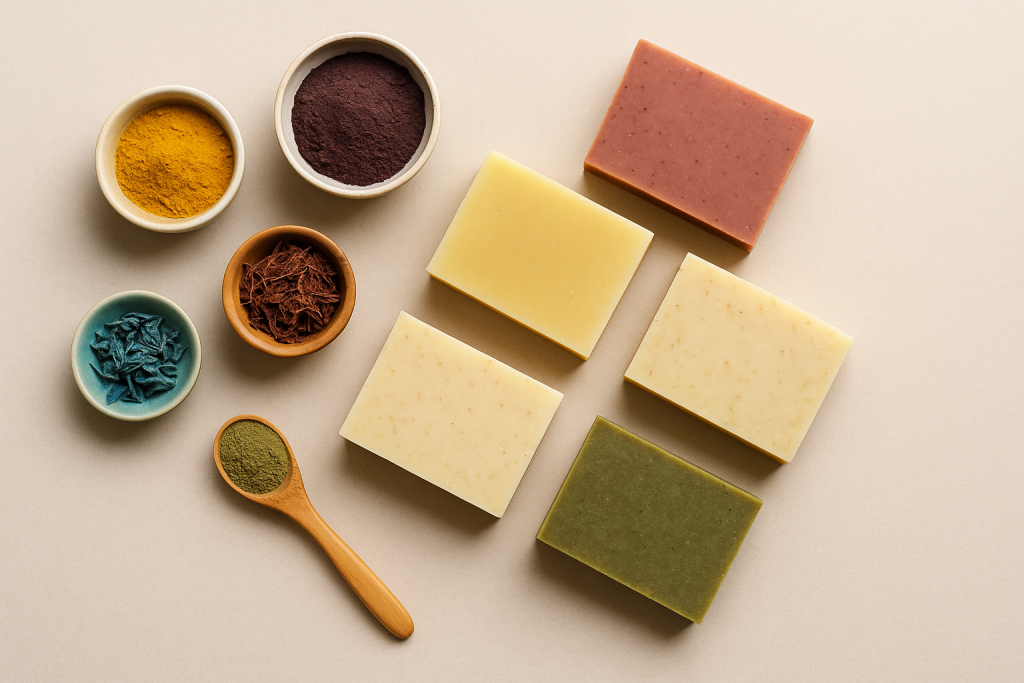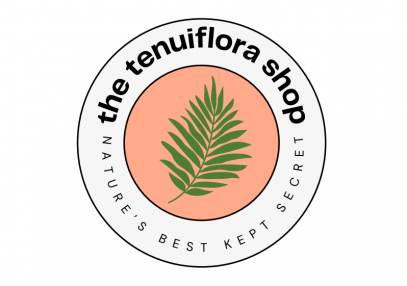Introduction: Why Natural Colorants Are Taking Over Soapmaking
There’s something deeply satisfying about creating soap that looks as natural as it feels. Over the past few years, soapmakers have been turning away from synthetic dyes and micas in favor of plant-based colorants — and it’s easy to see why.
Learning how to make natural soap colorants from plants connects you to a centuries-old craft. Long before factory pigments existed, artisans used roots, leaves, seeds, and flowers to bring color to fabric, clay, and soap. These same botanicals can transform your soap batches into earthy works of art — and with a little practice, you’ll discover that no two bars ever look quite the same.
Natural colorants aren’t just beautiful; they’re sustainable, skin-friendly, and endlessly customizable. Whether you prefer soft, muted hues or deep, bold tones, plants offer a full palette — from the golden yellows of turmeric to the pinks and purples of beetroot and Mimosa Hostilis Root Bark.
In this guide, we’ll explore how to source, extract, and use natural plant colorants for soapmaking, along with the best botanicals to start with.

Why Make Your Own Soap Colorants?
There are plenty of pre-made natural dyes on the market, but making your own gives you control, creativity, and connection to your materials. When you DIY your colorants:
- You know exactly what’s in your soap. No fillers, no additives — just pure plant pigment.
- You can adjust the strength. A longer infusion means deeper color.
- You waste less. You only make what you need, when you need it.
- You create something truly unique. Each batch will have its own subtle shade variations — a mark of true craftsmanship.
Whether you’re infusing oils, brewing strong teas, or grinding powders, plant-based dyes add character and authenticity that mass-produced colorants can’t replicate.
Understanding How Natural Pigments Work
Before jumping into recipes, it helps to understand how plant pigments behave in soap.
Plant colors come from compounds such as:
- Tannins – Found in barks, roots, and leaves (e.g., Mimosa Hostilis, oak, acacia). Create earthy reds and browns.
- Chlorophyll – Found in greens like spirulina and nettle. Produces soft green tones.
- Anthocyanins – Found in flowers and berries (e.g., hibiscus, alkanet root). Yield pinks, purples, and reds.
- Curcumin – Found in turmeric and curry plants. Creates golden yellows and oranges.
These pigments are sensitive to pH, temperature, and light. In cold process soapmaking, the natural alkalinity of lye can shift or fade certain shades. The good news? You can still achieve beautiful, lasting color with the right methods.
Methods for Making Natural Soap Colorants from Plants
There are three main ways to extract color from botanicals for soapmaking. You can use one method at a time or combine them to create richer tones.
1. Oil Infusion Method
This is the most popular and foolproof technique. It works best for botanicals that release pigment easily into oil — like turmeric, annatto, alkanet root, and madder.
What You’ll Need:
- Carrier oil (olive, sunflower, almond, or coconut)
- Dried plant material (powdered or shredded)
- A clean glass jar
- Cheesecloth or fine strainer
Steps:
- Add your dried plant material to the jar — about 1 part herb to 4 parts oil.
- Let it sit in a warm, sunny spot for 1–2 weeks, shaking occasionally.
- Once the color has deepened, strain out the plant matter.
- Use this tinted oil in your soap recipe as part of your total oil weight.
This method gives you smooth, even color and helps preserve the pigment through the saponification process.
2. Powder Method
This is the simplest and fastest method — ideal for soapmakers who want bold color without the wait.
How to Do It:
- Add powdered botanicals (like Mimosa Hostilis Root Bark or turmeric) directly to your lye water or at trace.
- Mix well to prevent clumps.
- The color will intensify as the soap cures.
Pro Tip: Use very fine powders to avoid a gritty texture. Mimosa Hostilis Root Bark powder, for example, blends beautifully into cold process soap and doubles as a gentle exfoliant.
3. Tea or Water Infusion Method
For flowers, herbs, and bark with strong pigment, you can create a tea infusion.
How to Make It:
- Boil your plant material in distilled water.
- Simmer for 15–30 minutes, or until the liquid darkens.
- Cool, strain, and use this water in place of your regular distilled water when mixing lye.
This technique is perfect for hibiscus, chamomile, indigo, or beetroot.
Best Plants to Use for Natural Soap Colorants
Here are some of the best and most reliable botanicals for achieving natural color in soap.
Mimosa Hostilis Root Bark
Rich in tannins, this bark yields deep purple, pink, and reddish-brown hues. It’s one of the strongest natural colorants you can use, and it doubles as an exfoliant in powdered form.
Find premium-quality Mimosa Hostilis Root Bark powder at The Tenuiflora Shop — ethically sourced and finely milled for consistent results.
Turmeric
Produces vibrant yellows and oranges. It’s stable, easy to use, and adds a warm, earthy glow.
Spirulina
Creates shades of green and teal. Best added at trace to preserve the hue.
Hibiscus
Yields pinks and reds, especially when brewed as a concentrated tea.
Madder Root
One of the oldest dye plants, known for its coral and rose tones.
Annatto Seed
Bright yellow-orange and incredibly stable. Perfect for warm-toned soaps.
Beetroot
Soft pink to mauve tones — subtle but beautiful in minimalist bars.
Alkanet Root
Creates lavender, gray, and violet shades that deepen as soap cures.
Combining Plant Dyes for Custom Shades
Natural dyes are just like a painter’s palette — the fun starts when you mix them. Here are a few beginner-friendly combinations:
- Turmeric + Indigo = Green
- Madder + Alkanet = Dusty Rose or Mauve
- Beetroot + Annatto = Warm Coral
- Mimosa Hostilis + Spirulina = Brownish-Red with Olive Tones
Experiment freely, but always note your ratios. Even tiny changes in concentration or temperature can transform the color completely.
Tips for Success with Natural Soap Colorants
- Infuse slowly. Longer infusions mean richer pigment.
- Don’t overheat your soap. High heat can destroy fragile pigments like chlorophyll.
- Expect change. Natural colors evolve — they may lighten or darken during cure time.
- Test small batches. Each botanical behaves differently depending on your oils, fragrance, and additives.
- Store properly. Keep your botanicals in airtight containers away from sunlight to preserve color strength.
Common Mistakes to Avoid
- Adding too much powder: This can lead to crumbly texture or clumps.
- Skipping strainers: Unfiltered infusions can leave plant specks.
- Using tap water: Minerals can react with dyes and alter color.
- Rushing infusions: Impatience leads to pale, uneven tones.
Where to Source Quality Botanicals
The quality of your soap colorants depends entirely on the freshness and purity of your botanicals. Always choose trusted suppliers that emphasize ethical harvesting and consistent batch quality.
At The Tenuiflora Shop, you’ll find Mimosa Hostilis Root Bark powder that’s ethically sourced, finely ground, and ready for natural craft use. Every batch is checked for potency and freshness, ensuring vibrant results in every project.
For additional inspiration, explore resources like Natural Dyes International, which offers insights into traditional dye techniques and sustainable sourcing.
Conclusion: Bring Nature’s Palette into Your Soapmaking
Making your own soap colorants from plants is more than just a creative experiment — it’s a way to connect your craft to the earth. Each color tells a story: the deep purples of Mimosa Hostilis Root Bark, the golds of turmeric, the cool blues of indigo, and the greens of spirulina all represent nature’s art.
Once you master how to make natural soap colorants from plants, your soaps won’t just be beautiful — they’ll be alive with character, meaning, and authenticity.
Shop authentic Mimosa Hostilis Root Bark powder at The Tenuiflora Shop and start crafting your next batch with color straight from nature.
